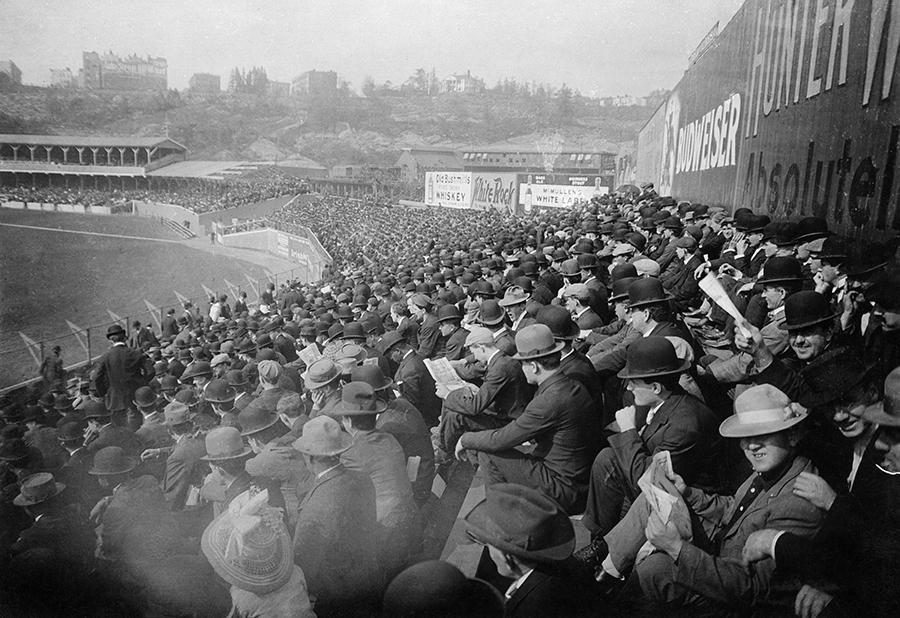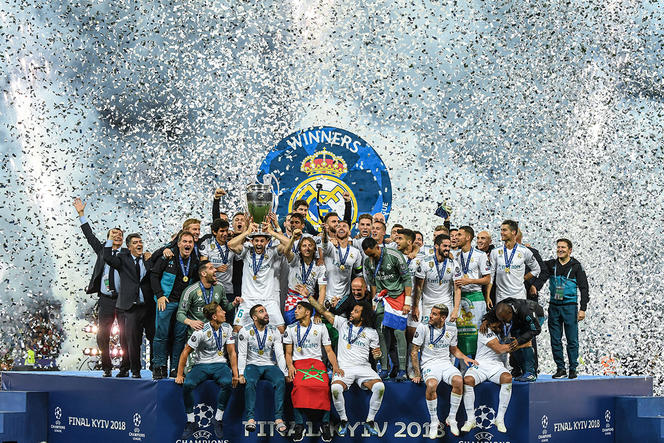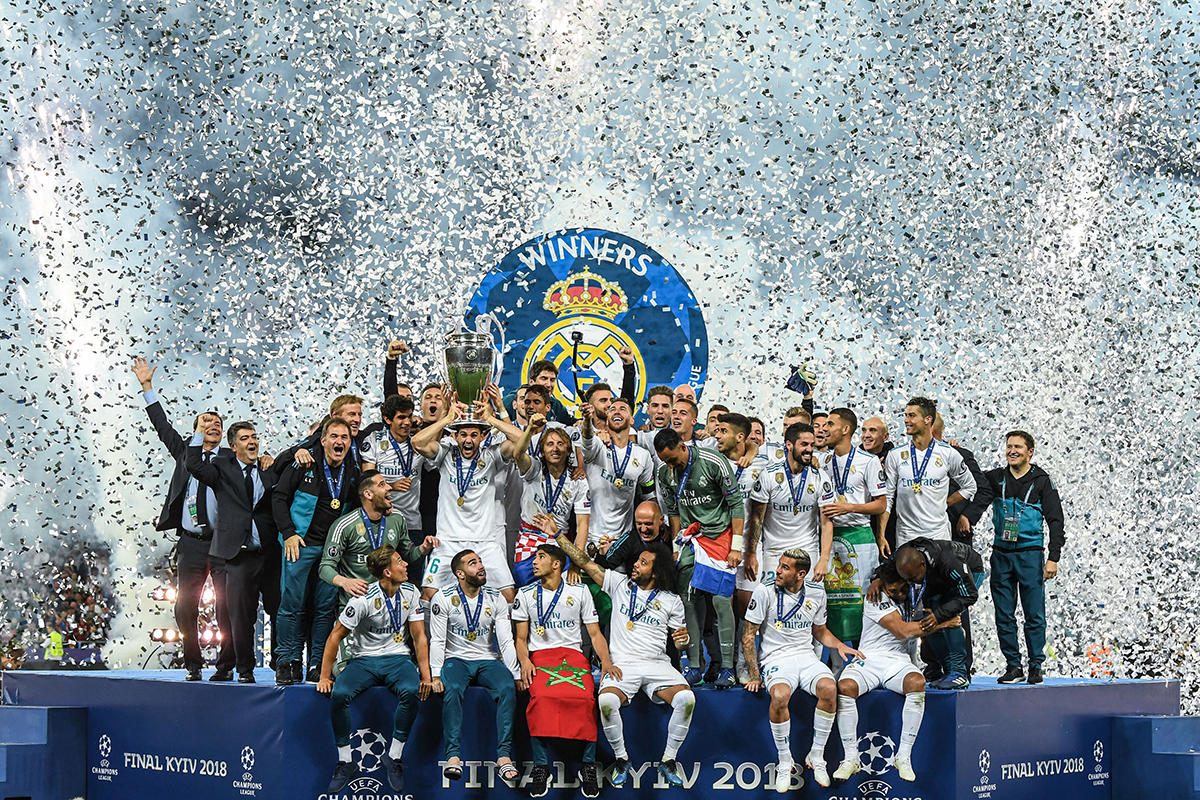You are here
The Small Business of Big Football
It may be a cliché, but still worth a brief recall: developments in football reflects those in society at large. Sociologist Richard Giulianotti1 thus distinguished four periods in the history of football: the traditional period, stretching from the birth of the game and of its rules at the end of the 19th century through to the First World War, during which national competitions came into being; the early modern period, between the two world wars, which saw the introduction of the professional game in many countries; the late modern period, from the Second World War to the end of the 1980s, during which time national championship games began to be televised regularly; and finally, the post-modern period that began in the 1990s with the Bosman ruling and skyrocketing TV licensing fees, which led on the one hand to worldwide player mobility, and on the other, to the exponential rise in wages and transfer fees. Like the economy, football has today become global: throughout these different periods, it ascended from the local to the national stage, and from the national to the international stage.

Tradition versus post-modernism
The globalization of football has not prevented supporters, or a part of the population attached to older social values, from continuing to live their sport at the local level. This disparity has not had the same effect on supporters of major European teams, which have profited greatly from the sporting and financial competition, or for supporters of teams from smaller towns stuck in the lower echelons of the national championships and fighting to remain in the highest division.
The free movement of players, which has resulted in high levels of mobility in the smaller professional clubs, has also created a rift between long-time supporters of their clubs forever and players who are merely passing through. Today, some criticism of football is based on the existence of this chasm between the viewpoint of supporters, with their attachment to traditional values, and the realities of the modern game.
Football is small business
In modern football, we talk a lot about money, billionaires, TV rights, the profitability and value of clubs, players’ salaries and transfer fees, and so on. It is not uncommon to listen to people talk about football clubs like listed companies on the stock exchange. Some also refer to football as a sector of the economy that may very well experience a “crash,” a “crisis”, or a “financial bubble.”
But there has always been money in football: William McGregor, the founder of the English Football League in 1888, and a draper, declared as early as 1905 that “Football is big business”! But the financial amounts in question are not astronomical when compared with the world of business. And in all reality, it’s small business in terms of revenue: the turnover for Europe’s top five European professional championships (around €13.4 billion) is slightly lower than that of the French national sports betting agency, La Française des Jeux. Furthermore, overall, the trend among clubs within Europe’s top tier is one of breaking even. They generate neither profit nor loss in the long term, and until now, their activity has not been profitable. Despite their debts, which form a historic component of football, clubs are in fact among the most long-lived of all businesses, with certain clubs being almost as old as the game itself: Manchester United was formed in 1878, Liverpool FC in 1892, Juventus of Turin in 1897, FC Barcelona in 1899, Bayern Munich in 1900, Real Madrid in 1902, and so on; in France, Le Havre was founded in 1872 and is still alive and well today.
An elevator system
Football has never been profitable because it operates in an open league, in other words with a system of promotions and relegations. This elevator system has an impact on the financial strategy of teams: it incites top-division teams to invest in quality (i.e. buying good players and paying them more) in a bid to maintain their high level and generate revenue.
Similarly, teams in the lower tiers are motivated to invest since they know that they may attain promotion to the higher divisions. Furthermore, as new teams climb up the ranks, the other clubs already there invest to protect their own position. This creates upward pressure on salaries, because as teams battle to maintain their position in the top tier, and vie above all for qualification to the jewel in the crown of European competitions—the Champions League—clubs are ready to pay their players more, especially their superstars.
A market of superstars
Labor markets in which superstars exist have three fundamental characteristics: salaries increase exponentially with talent; the majority of employees earn less than the average wage for the sector; consequently, a handful of superstars captures the majority of distributed wealth (income) since they enjoy a monopoly position in their particular market segment. As a result, most clubs are in a state of financial equilibrium and football has never really been an activity that enables club owners to become rich or make profits. Finally, football is one of the rare economic activities in which wealth distribution operates in favor of employees (many of whom come from modest backgrounds) who thus have negotiating power due to an absence of any wage ceiling. Indeed, if such a ceiling—which has been called for by certain politicians and sports writers—did indeed exist, distribution of revenue would inexorably shift in favor of the clubs.
What then is the future of the beautiful game on the Old Continent in a globalized and financialized market? Using the financial manna provided by TV companies and other broadcasters, the owners of Europe’s major clubs are seeking to modify wealth distribution further to their advantage. These efforts are evident in the recurring proposals regarding a closed European Super League comparable to that of North American leagues. If TV stations across the entire globe (and doubtless the big Web companies) are ready to lay out billions of euros each season for broadcasting rights on the English championship and the US football championship, how much would they be prepared to spend on Europe’s 20 top teams playing one another at the world’s most popular sport? Indeed, football is not dead. But it is changing.
The analysis, views and opinions expressed in this section are those of the authors and do not necessarily reflect the position or policies of the CNRS.
- 1. Football. A sociology of the global game, Polity Press, 1999.










